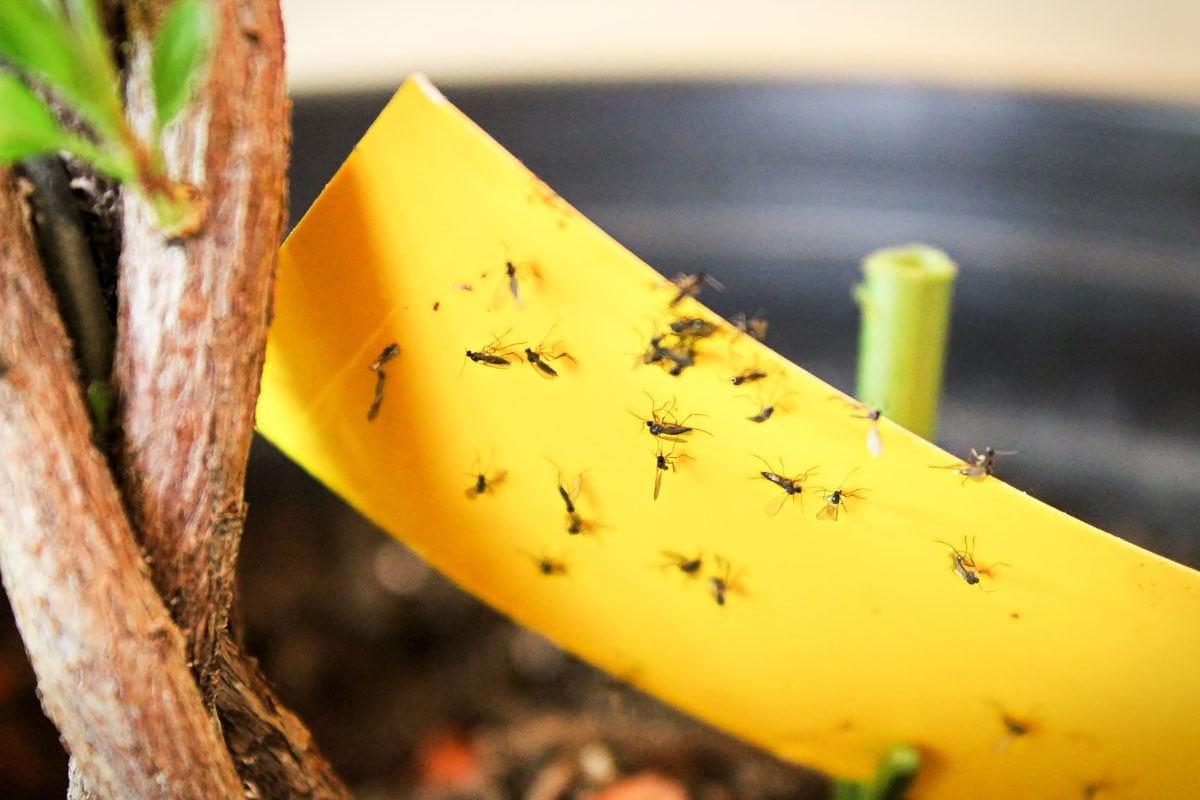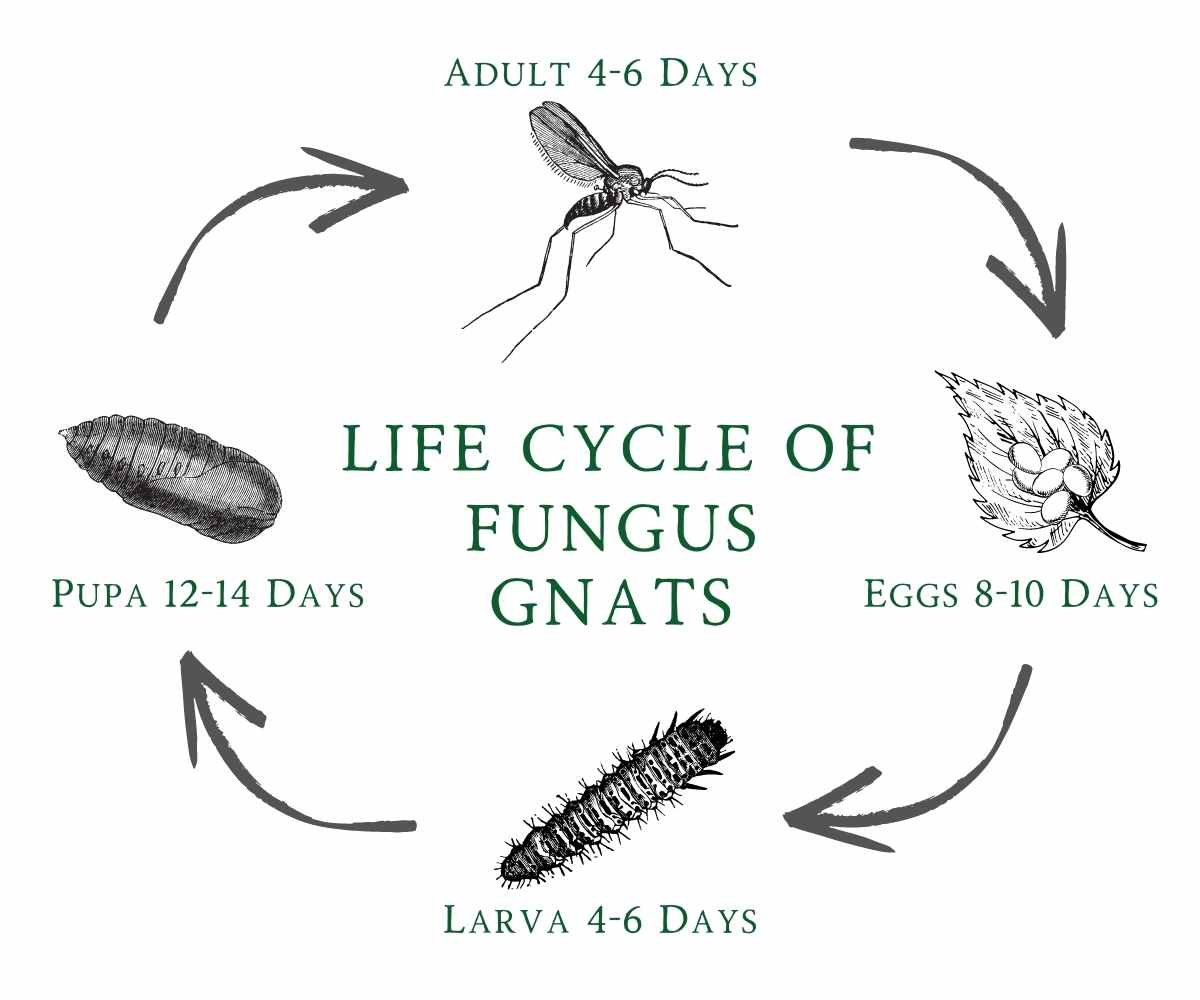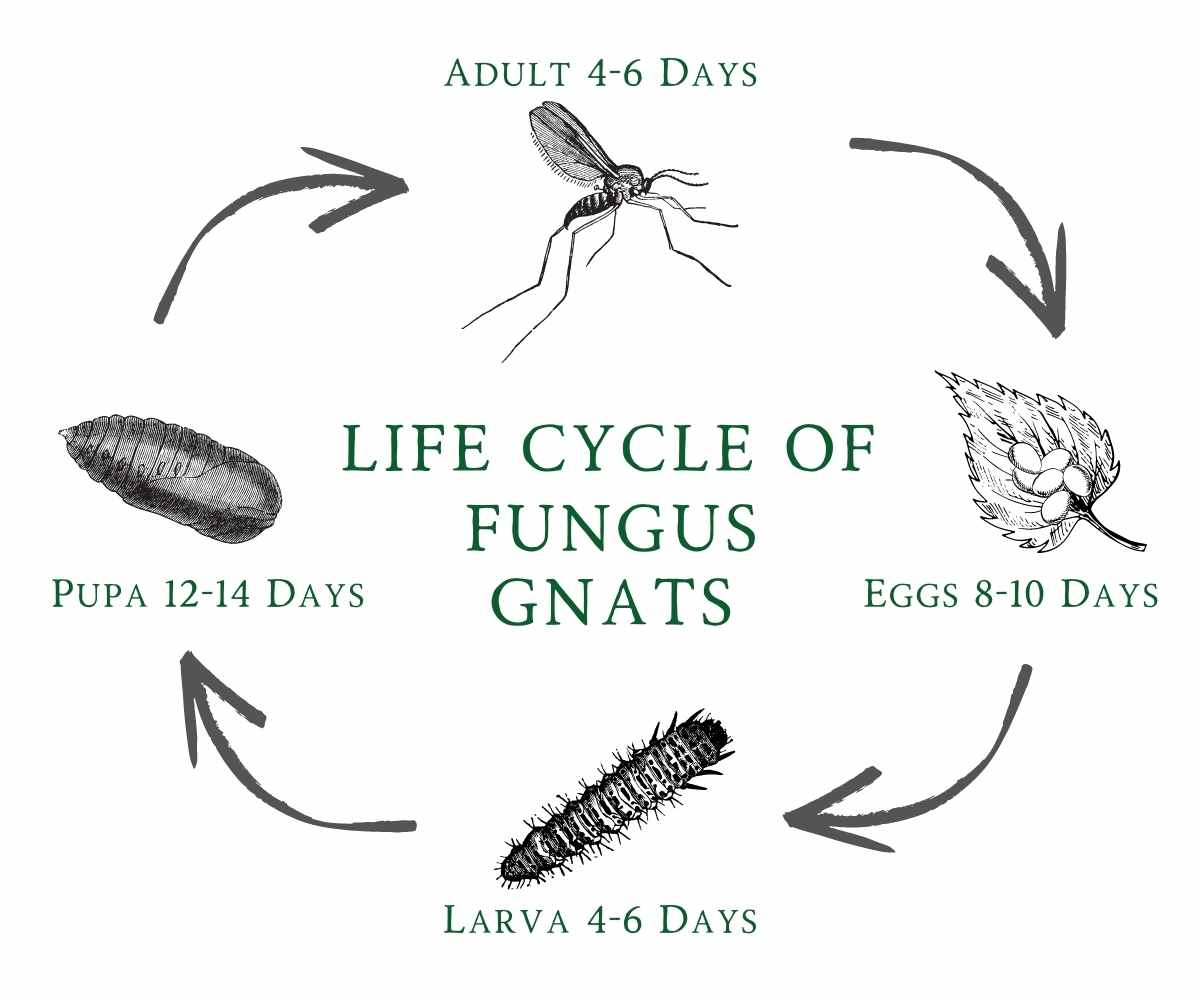The Best Ways to Get Rid of Fungus Gnats in Seedlings is a critical concern for gardeners and plant enthusiasts alike. These tiny, pesky insects can quickly infest seedlings, causing damage that can hinder growth and even lead to plant death.
Fungus gnats thrive in moist, humid environments, making them a common problem for indoor growers and those who cultivate seedlings in greenhouses. Their larvae feed on the roots of seedlings, weakening them and making them more susceptible to diseases. Understanding the life cycle of fungus gnats and the conditions that attract them is the first step in controlling them.
By implementing a combination of preventive measures, natural control methods, and, if necessary, chemical treatments, you can effectively eliminate these pesky pests and protect your precious seedlings.
Understanding Fungus Gnats: The Best Ways To Get Rid Of Fungus Gnats In Seedlings
Fungus gnats are small, black flies that are commonly found in moist environments, such as greenhouses and homes with potted plants. They are a common pest for gardeners and can be a nuisance, but they are not harmful to humans or pets.
However, their larvae can damage seedlings and plants.
Fungus Gnat Life Cycle
Fungus gnats undergo a complete metamorphosis, which involves four distinct stages: egg, larva, pupa, and adult.
Fungus gnats are a common problem for indoor gardeners, but there are effective ways to control them. One method is to use sticky traps to capture the adults. Another approach is to introduce beneficial nematodes to your soil, which will kill the larvae.
For a more visually appealing approach, consider creating a hanging plant wall in your home, as described in this comprehensive guide, How to Create a Hanging Plant Wall in Your Home. This will not only add a touch of greenery to your space but also potentially deter fungus gnats as they are less attracted to well-ventilated and dry environments.
- Egg:Fungus gnat eggs are small, white, and oval-shaped. They are typically laid in moist soil, near the surface.
- Larva:Fungus gnat larvae are small, white, and worm-like. They feed on decaying organic matter, such as fungus, algae, and roots.
- Pupa:Fungus gnat pupae are brown and resemble small, oval-shaped cocoons. They are typically found in the soil, near the surface.
- Adult:Adult fungus gnats are small, black flies with long legs. They are attracted to light and moisture and typically live for a few weeks.
Conditions That Attract Fungus Gnats
Fungus gnats are attracted to moist environments, which are often found in homes with potted plants.
Fungus gnats are a common pest for gardeners, especially those starting seedlings. While there are many ways to get rid of them, one effective method is to introduce beneficial insects like predatory mites. These tiny creatures can help control the gnat population, and they’re especially useful for those who prefer natural pest control methods.
For those who want to add a splash of color to their indoor gardening, consider adding some hanging plants that bloom all year long, such as petunias, geraniums, or begonias. These plants can not only brighten up your space but also help deter fungus gnats by adding a natural barrier to their movement.
- Overwatering:Overwatering creates a moist environment that is ideal for fungus gnat larvae.
- Poor Drainage:If the soil in a pot does not drain well, it can become waterlogged, which attracts fungus gnats.
- Organic Matter:Decaying organic matter, such as compost, can attract fungus gnats.
- High Humidity:High humidity levels can also attract fungus gnats.
Damage Caused by Fungus Gnats
Fungus gnat larvae can damage seedlings and plants by feeding on their roots.
- Root Damage:Fungus gnat larvae can damage roots, which can weaken plants and make them more susceptible to disease.
- Stunted Growth:Root damage can also lead to stunted growth.
- Wilting:If the roots are severely damaged, the plant may wilt and die.
Preventive Measures

Fungus gnats are a common problem for gardeners, but with proper prevention, you can significantly reduce the risk of infestation. Implementing a preventative strategy focuses on creating an unfavorable environment for these pests, thus minimizing their chances of thriving in your growing space.
Maintaining a Clean and Healthy Growing Environment
A clean and healthy growing environment is crucial for preventing fungus gnats. These pests are attracted to damp, decaying organic matter, so keeping your growing area clean and well-maintained is essential.
- Regularly remove any fallen leaves or debrisfrom the surface of your potting mix. This will eliminate potential breeding grounds for fungus gnats.
- Water your plants only when necessary, allowing the top inch of soil to dry out between waterings. Overwatering creates a damp environment that fungus gnats thrive in.
- Avoid over-fertilizing. Excess fertilizer can create a nutrient-rich environment that attracts fungus gnats.
- Use a fan to circulate airin your growing space. This will help to dry out the soil and prevent the buildup of moisture.
- Clean and disinfect your pots and traysbefore reusing them. This will prevent the spread of fungus gnat eggs and larvae.
Using Sterile Potting Mix, The Best Ways to Get Rid of Fungus Gnats in Seedlings
Using a sterile potting mix is a crucial step in preventing fungus gnat infestations. Sterile potting mixes are treated to eliminate any existing fungus gnat eggs or larvae.
- Look for potting mixes labeled “sterile” or “fungus gnat-resistant.”These mixes are specifically formulated to prevent fungus gnat infestations.
- Consider using a soilless mix. Soilless mixes, such as coco coir or perlite, are less likely to harbor fungus gnats.
- Avoid using garden soil. Garden soil is often contaminated with fungus gnat eggs and larvae, making it more susceptible to infestations.
Chemical Control Methods
If you’ve tried all the preventive measures and are still battling fungus gnats, chemical insecticides may be your last resort. However, it’s crucial to use them cautiously and only when absolutely necessary, as they can harm beneficial insects and potentially pose risks to humans and pets.
Types of Insecticides
Commercially available insecticides effective against fungus gnats typically fall into the following categories:
- Pyrethroids:These synthetic insecticides are derived from chrysanthemum flowers and are known for their fast-acting, knockdown effect on insects. Examples include permethrin, bifenthrin, and cyfluthrin. They are often found in sprays, granules, and soil drench formulations.
- Neonicotinoids:These insecticides mimic nicotine and disrupt the nervous system of insects. They are highly effective against fungus gnats but have been linked to environmental concerns, including harm to pollinators. Examples include imidacloprid and clothianidin.
- Organophosphates:This group of insecticides is known for its broad-spectrum activity, meaning it can kill a wide range of insects. However, they are also highly toxic and should be used with extreme caution. Examples include malathion and chlorpyrifos.
Application Methods and Safety Precautions
- Always read and follow the instructions on the product label carefully.This includes information on dilution rates, application methods, and safety precautions.
- Apply insecticides in the evening or at nightwhen fungus gnats are most active. This helps minimize exposure to beneficial insects and pollinators.
- Avoid spraying insecticides directly on plants, as it can damage their foliage. Instead, target the soil surface where the fungus gnat larvae reside.
- Wear protective gear, including gloves, a mask, and eye protection, when handling insecticides. Wash your hands thoroughly after application.
- Keep children and pets away from treated areasuntil the insecticide has dried completely. This may take several hours or even days, depending on the product.
Effectiveness and Drawbacks
- Pyrethroids:These insecticides are generally effective against fungus gnats, providing quick knockdown. However, they can be harmful to beneficial insects and may need to be reapplied frequently. They are also known to be toxic to fish and aquatic life.
- Neonicotinoids:These insecticides are highly effective against fungus gnats, but their potential impact on pollinators and the environment raises concerns. They can persist in the soil for a long time, potentially affecting future plant growth.
- Organophosphates:While effective against fungus gnats, organophosphates are highly toxic to humans, pets, and wildlife. They should be used as a last resort and only with extreme caution.
Other Helpful Tips

Beyond preventive measures and chemical controls, adopting certain practices can further minimize fungus gnat infestations in your seedlings. These tips focus on optimizing the growing environment to discourage gnat activity and promote healthy plant development.
Proper Watering Techniques
Watering your seedlings correctly is crucial in deterring fungus gnats. These pests thrive in consistently moist environments, so overwatering creates ideal breeding grounds.
- Allow the soil to dry slightly between waterings:This practice ensures that the soil is not perpetually damp, which discourages gnat reproduction.
- Water thoroughly but infrequently:Deep watering encourages root growth and minimizes the likelihood of surface moisture that attracts gnats.
- Use a watering can with a fine rose:This helps to distribute water evenly and prevent excessive runoff, which can lead to soggy soil.
- Avoid overhead watering:Overhead watering can create standing water on the soil surface, attracting gnats. Instead, water directly at the base of the plants.
Improving Air Circulation
Good air circulation is essential for healthy plant growth and can help prevent fungus gnat infestations.
- Ensure adequate spacing between seedlings:Crowded seedlings can trap moisture and create a favorable environment for gnats.
- Use a fan to gently circulate air:A small fan can help to dry out the soil surface and reduce humidity, discouraging gnat activity.
- Avoid covering seedlings with plastic domes or humidity domes:These can trap moisture and create a breeding ground for gnats.
Identifying and Removing Infected Seedlings
Fungus gnats can damage seedlings by feeding on roots, causing stunted growth and wilting.
- Inspect seedlings regularly:Look for signs of wilting, yellowing leaves, or stunted growth, which can indicate root damage caused by fungus gnats.
- Remove and discard infected seedlings:Infected seedlings should be removed from the growing area and disposed of properly to prevent the spread of gnats.
End of Discussion

By understanding the biology of fungus gnats and implementing a multi-faceted approach, you can effectively manage these pesky insects and ensure the healthy growth of your seedlings. Remember, prevention is key. Maintaining a clean and sterile growing environment, using high-quality potting mix, and practicing proper watering techniques can significantly reduce the risk of infestation.
If fungus gnats do appear, a combination of natural control methods, such as beneficial nematodes and yellow sticky traps, can be effective in controlling their populations. In severe cases, chemical insecticides may be necessary, but always use them with caution and follow label instructions carefully.
With a little diligence and the right strategies, you can keep fungus gnats at bay and enjoy the satisfaction of nurturing healthy, thriving seedlings.
User Queries
What are the signs of a fungus gnat infestation?
You’ll likely see small, black flies hovering around your seedlings. You might also notice tiny white or gray worm-like larvae in the soil, especially near the surface.
Can fungus gnats harm my adult plants?
While fungus gnats primarily target seedlings, they can also infest mature plants, especially those that are stressed or have weakened root systems. However, the damage is usually less severe in adult plants.
Are there any homemade solutions to get rid of fungus gnats?
Yes, you can try using a solution of water and dish soap. Fill a shallow dish with water and add a few drops of dish soap. The soap will break the surface tension of the water, trapping the gnats. You can also try placing a few slices of raw potato or carrot in the soil.
The gnats will be attracted to the food and get stuck in the sticky substance.
